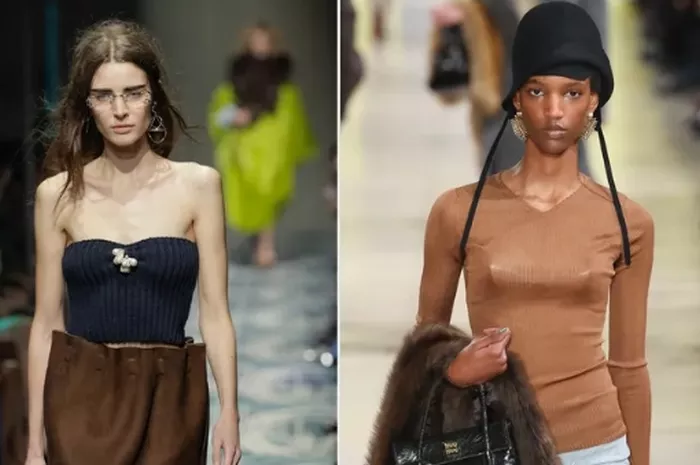Designers for Fall 2025 appeared to move away from straight and narrow silhouettes on the runway. Alaïa, for example, opened Paris Fashion Week with tubular hooded dresses and flowing skirts inspired by sculptor Mark Manders. Sarah Burton’s Givenchy debut focused on “everything about the modern woman,” featuring exaggerated shoulders paired with a sharply inverted waist, while Anthony Vaccarello’s Saint Laurent show embraced minimalist tailoring. At Miu Miu, Miuccia Prada made a bold statement with bullet bras and curved-shoulder suits, declaring, “The identification of the feminine is synonymous with the curve.”
While the runway shows celebrated curves through creative design, the casting choices failed to reflect this trend. Throughout the season, there was a noticeable absence of mid- and plus-size models—an issue that sparked daily discussions among fashion editors. A size-inclusivity study released by Vogue Business on March 17 confirmed this observation, revealing that only 0.3 percent of the looks presented in major markets (New York, London, Milan, and Paris) were modeled by plus-size individuals. This marks a significant decline from the previous season, when 0.8 percent of looks featured plus-size models.
This stark contrast highlighted the fashion industry’s true perception of curves, with many designers embracing curvaceous forms in their collections while excluding models who embody these shapes. While exaggerated bustles and wide shoulders may symbolize empowerment and confidence in design, garments with a trompe l’oeil hourglass figure or skirts that hover away from the body create the illusion of a smaller shape. The message of “Take up space!” applies to clothing, but not to diverse body types.
In show notes, designers positioned their curvaceous designs as a celebration of “the power of femininity,” as Miu Miu put it. However, with the representation of plus-size models at an all-time low, the curves showcased on the runway remain largely artificial. The 97.7 percent of straight-size models can easily alter their shapes to fit a given look, yet women whose bodies inspired these designs are either excluded or unable to participate, as most collections are only made in sample sizes. This creates a disconnect where the clothes speak one message, but the casting sends an entirely different one.
Designers need not choose between making a statement with their collections and embracing inclusive casting. Hermès, for instance, made headlines as the only brand during Paris Fashion Week to feature a plus-size model, according to Vogue Business. The question remains: what prevents other designers from fully embracing inclusivity while claiming to value curves—or women in general?
This season has acted as a precursor to major changes expected next September, with several high-profile fashion houses such as Balenciaga, Bottega Veneta, Chanel, Loewe, and Dior welcoming new creative directors. These fresh voices are expected to radically transform the appearance of the brands they oversee. It marks a pivotal moment in the industry, with the legacies of these labels being redefined in real-time.
As these transitions unfold, there is hope that the new designers will assess their casting choices, consider the diversity of real women, and finally address the need for greater size inclusivity. Alaïa’s creative director, Pieter Mulier, described his latest collection as “clothes designed to reflect the topography of the female form through curves and padding.” The time has come for runways to go beyond merely reflecting one ideal body type and reimagine Fashion Week as a platform that celebrates all women’s forms.
Related Topics
- Where to Buy Men’s High-Rise Jeans?
- Cayman InStyle Fashion Week Returns with a Spectacular Lineup
- Lakmē Fashion Week X FDCI Returns to Mumbai, Marking 25 Years of Fashion and Beauty Evolution

